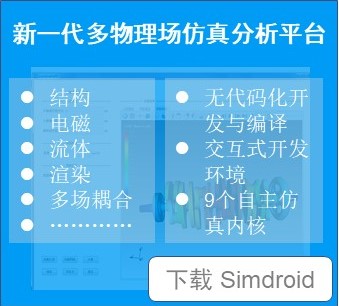- 积分
- 19
- 注册时间
- 2005-6-23
- 仿真币
-
- 最后登录
- 1970-1-1
|
 发表于 2005-10-6 23:06:09
|
显示全部楼层
发表于 2005-10-6 23:06:09
|
显示全部楼层
来自 广东广州
Re:怎么计算温度场和浓度场的耦合.请教临江仙.

其实先生不必过于在意我之所言,这只不过是学术上的一些小小的争议而已,我并无对先生的能力有所怀疑。原来我还准备继续这个讨论,不过既然先生并无此意,只好作罢。
只是窃以为,百家争鸣,百花齐放,一些小争议,有如滴水生花,总比论坛冷冷清清似一潭死水好得多。或许是你对,或许是我错,但这也只不过是大家共同前进的一段小插曲而已。
gatech wrote:
This is my last reply to this post. Let's look at the PDEs you have provided.
For the first PDE, the analytical solution is T=t if zero flux boundaies and zero initial condition are used. So for your problem, we can get Txx=0 (very interesting result).
Now insert Txx into the second PDE, we get C=0 (this is the analytical solution of the second PDE if zero flux and zero initial condition are used).
So we can see you did nothing but just to put Txx=0 into the second PDE. If one solve the first PDE in femlab, Txx will be about 10^(-13), which is too small to be important. Of course, your conclusion is within expectation because Txx is only something like rand noise contribution.
As i said in my previous reply, in SOME cases, using second derivative in the source term will result in tragedy. I am not saying all the cases.
Just feel free to use whatever you like, i have explained clearly why second derivatives can not be used in the source term and the flux term. If someone likes to use them, dont claim the solutions are finite element solutions. |
|